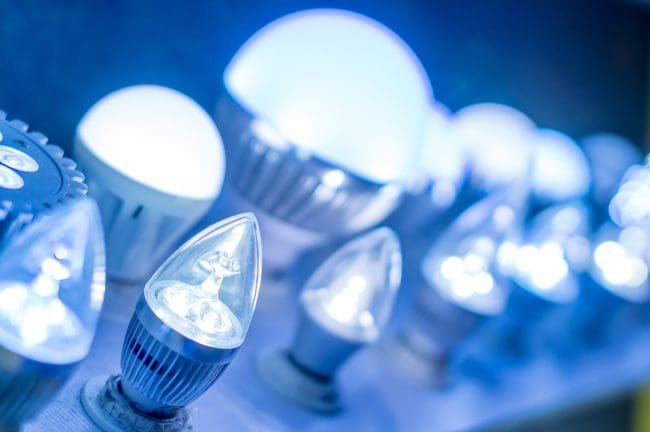You may have heard of the European Commission’s ban on the manufacture and export of halogen lightbulbs within the EU, which came into force on September 1 2016.
While halogen bulbs are still available to buy, many types are no longer in production, so the time has never been better to switch over to LED bulbs.
Here’s just nine of the main benefits you’ll see once you’ve gone over to the light side!
LED lights last far, far longer than incandescent or halogen bulbs
This is the number one advantage of using LED lights – they are designed to operate for an average of 35,000 hours and sometimes up to 100,000 hours. You can expect your bulbs to last you up to 15 years with normal usage – six to eight hours a day. They don’t burn out over time like halogens or incandescents, or lose any brightness.
They’re enormously energy-efficient
LEDs are our most energy-efficient way of lighting – they have an 80-90% efficiency, which means 80-90% of their energy is turned into light rather than heat.
Incandescent bulbs lose 80% of their energy as heat and so are only 20% efficient. You can fit your entire house out with LED lights – you’ll find it a worthwhile investment after just a year, especially if you buy your lights from cartridgepeople.com or Saazs.com , as they always have great offers going.
They’re ecologically-sound, too
LEDs don’t contain any toxic compounds or elements like mercury. They are also 100% recyclable; using LED lights will help you to reduce your carbon footprint by a third. The fact that they last for such a long time – on average 35 times more than a halogen – means that they also save on material and production costs.
LEDs are also very tough and durable
LEDs are made with very sturdy materials and components that can stand up to harsh weather, shocks, vibrations and abrasion. This is why they’re increasingly adopted for roadside and civil engineering applications.
They have almost no UV emissions
This, and the fact they produce very little infra-red light, makes LEDs perfect for use in storage facilities and cupboards as they won’t degrade stored materials by either UV or heat. Museums are using them more and more to illuminate displays without damaging the artefacts.
They offer great design flexibility
LED light arrays can be placed and combined in an infinite number of ways to produce efficient – but also controllable – illumination. The colour, shade, brightness and distribution of light can be controlled to perfection, which makes for not only technically-useful lighting, but also soothing, uplifting or energising mood lighting.
They can work in extreme temperatures
LEDs are perfect for using in very cold environments, like freezer rooms or in extreme climates. Other lights, like incandescent or fluorescent, can be affected by cold, but LEDs are reliable even when the mercury drops.
They work instantly
LED lights are bright immediately and they can also be turned off and on as many times as necessary without affecting their performance, even over the long term. Halogen lights or low-energy bulbs usually take a few minutes to achieve maximum output, and turning them off and on reduces their lifespan.
LED lights can work on low-voltage power
As LEDs can work with low-voltage, they’re ideal for outdoor use – camping, garden rooms, alongside a solar energy source and in remote areas.
Are you convinced yet? You should be! You can even check out this website for condos that come equipped with some of the fanciest led bulbs.


